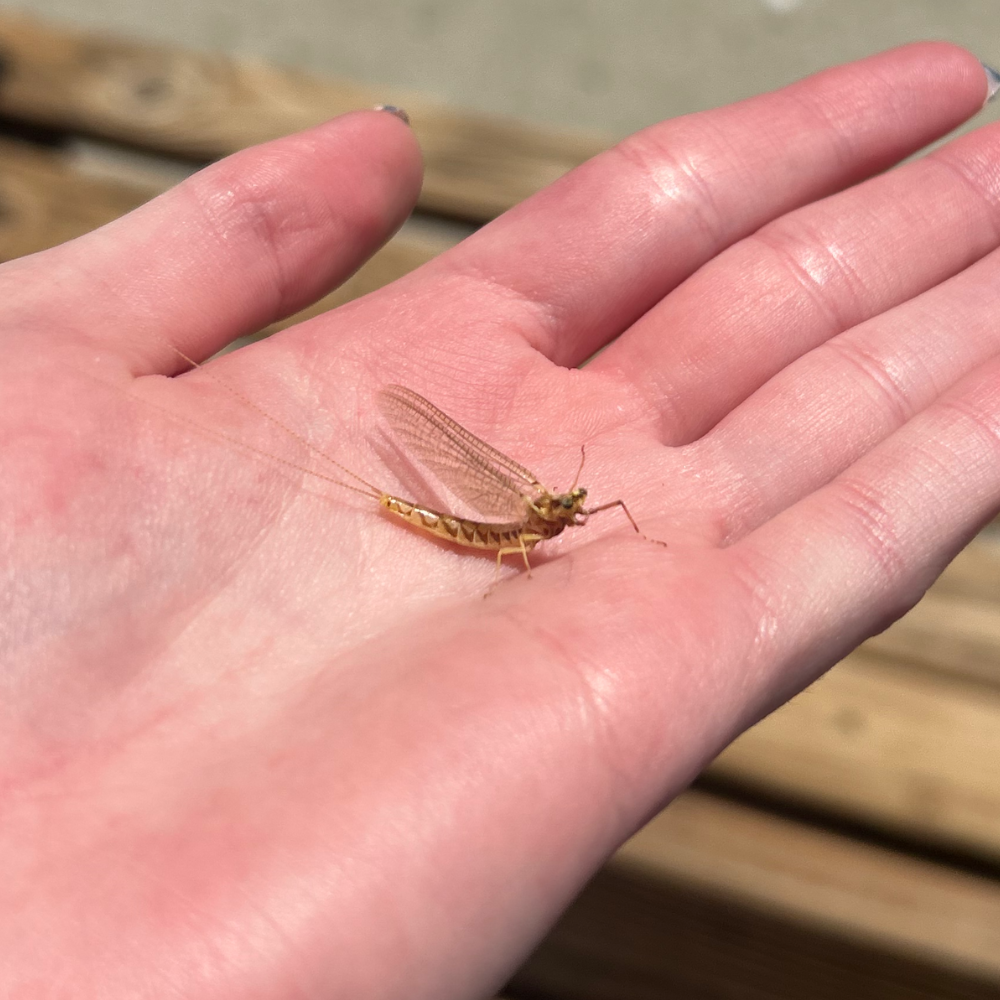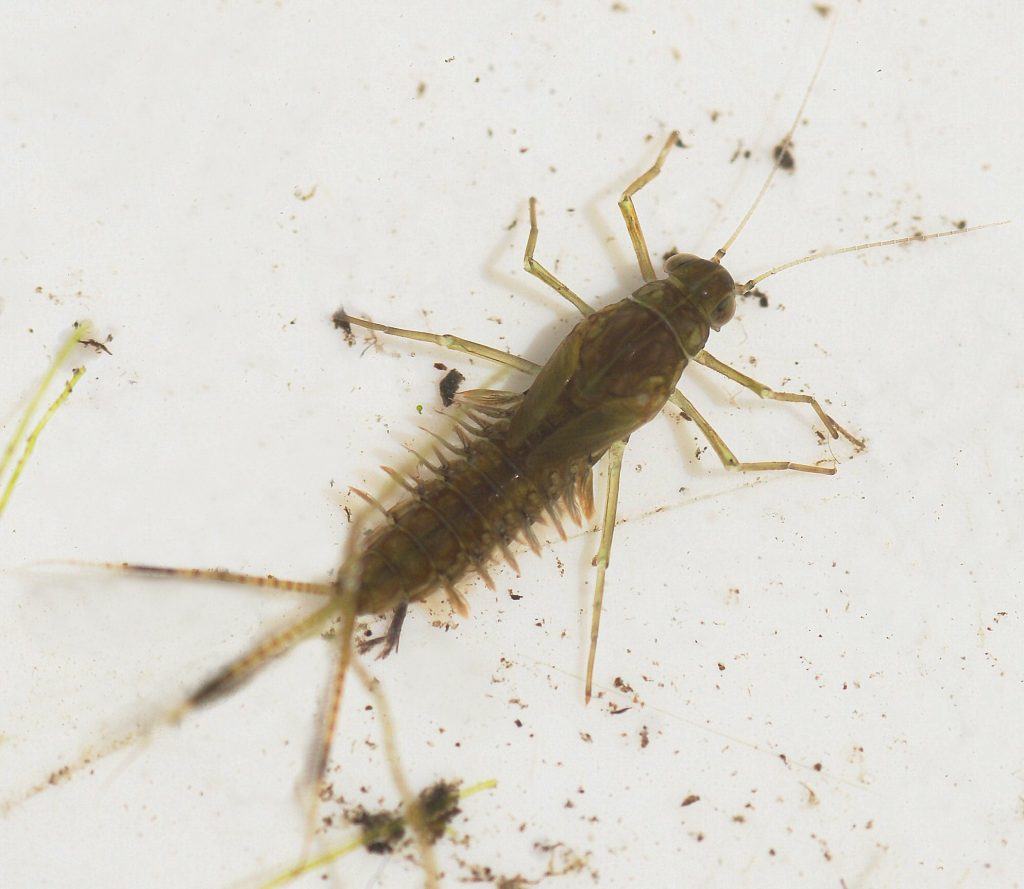Macroinvertebrates may be small, but they play a crucial role in maintaining the health and balance of our rivers, streams, and lakes. Often unseen, these organisms quietly support ecosystems by breaking down organic material, cycling nutrients, and serving as a vital food source for other wildlife. Today, we’re shining a spotlight on one macroinvertebrate in particular, and soon they’ll be making their seasonal debut!
Whether you call them Mayflies or refer to them as Junebugs, folks in Northwest Ohio know exactly what you’re talking about. Belonging to the order Ephemeroptera—from the Greek ephemera (short-lived) and –ptera (wings)—mayflies are a summertime staple in our region. These fascinating insects have been around longer than the dinosaurs and are considered key indicators of clean, unpolluted water.

As an indicator species, mayflies are highly sensitive to environmental changes. A decline in their numbers can signal potential water quality problems. Factors like fluctuating water temperatures, increased presence of invasive species, and changing weather patterns all influence their survival and reproduction.
When environmental conditions are just right, here’s what we can expect: After mating, the female mayfly lays her eggs on the surface of the water. These eggs then sink and attach to underwater rocks and plants. Depending on the water temperature and other factors, the eggs hatch within days to several weeks, releasing aquatic nymphs that settle at the bottom of waterways. These nymphs live and grow underwater for up to three years, going through as many as 20 molts (or instars) during their development.

When ready to transition to adulthood, the nymphs rise to the surface and emerge as sub-imagoes, also called “duns.” At this stage, they have dull-colored wings and undeveloped legs, eyes, and reproductive organs. The emergence process takes about 30 seconds, and during this brief period, they’re highly vulnerable to predators.
Once their wings have dried, the sub-imagoes fly to nearby vegetation, where they undergo one final molt to become fully mature adults, known as imagoes or “spinners.” This final transformation can take anywhere from 30 minutes to several hours. These brightly colored adults are now ready to mate, completing the final stage of their life cycle. True to their name, mayflies in this final stage live only about a day.
So, if you find yourself surrounded by a cloud of mayflies this season, don’t panic! Their presence is a strong indicator that our waterways are clean and thriving. And don’t worry, they won’t bite. They don’t even have mouths in their adult stage! While large swarms can be a bit startling, they’re completely harmless.
Here’s a quick tip: If mayflies are getting a bit too close for comfort, gently pick them up by their wings and release them back into the air. Avoid squashing them! Doing so can stain your clothes (and trust us, those stains don’t come out, even with bleach). More importantly, killing mayflies disrupts the local food chain. They are a crucial food source for fish, frogs, birds, and many other wildlife species.
